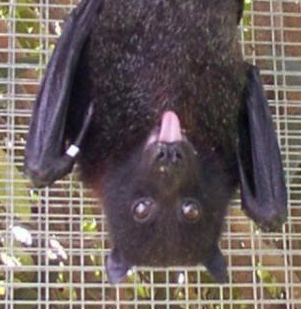
Hi everyone! I hope you all had a good week!
Recently, scientists started looking into the microbiome of bats and realized that they are very different from those of other mammals. In humans, our microbiome, specifically the gut bacteria, helps keep us healthy. The microbes help digest our food and help with a range of health conditions. In fact, all mammals have microbes that follow a similar set of rules and have evolved with the mammals. A lot of the time, the mammal and their respective microbiome have evolved to need each other to survive. Because of this, many species that are closely related share similar microbiomes. However, even though bats are mammals, they have evolved to follow a different set of rules. Even bat species that are closely related have very different microbiomes. They also don’t seem to follow any sort of evolutionary pattern. This all leads scientists to the conclusion that gut bacteria is not as crucial to bats.
In order to look into this further, researchers took skin, tongue, and gut samples from 497 bats from 31 different species from Uganda and Kenya. This experiment showed that there is more bacterial diversity on the skin of bats that in the mouth or gut.
Since bat microbiomes don’t follow an evolutionary pattern, researchers tried to find another way that they are related. They found that the only predictor of the types of bacteria found in a bat’s gut is where the bat lives. If similar bat species live far apart, their microbiomes are different, however if they live close together and eat similar things, then their microbiomes are more likely to be similar. Researchers also found that bats living at higher altitudes have more diverse microbiomes. Another interesting finding was that most mammals’ guts are dominated by a bacterium called Firmicutes, however bat guts have a bacterium called Proteobacteria. This is very similar to birds.
Scientists think that the differences are caused by the fact that bats are the only mammals to achieve flight. Because they fly, their anatomy changed and adapted. Since they are small animals that fly, bats can’t afford to carry around any extra weight. All of the nonessentials had to be lost. Compared to mammals of a similar size, bats have shorter guts, which means that they have less intestinal tissue and eat less food. This adaptation reduces their weight and helps make flying less energy taxing. A shorter gut means that the food digestion process is shorter and the bats have a smaller chance of relying on the links with the bacteria they carry.
Since bats don’t have a tight bond with their microbiome, they don’t have a very stable defense system, and rely on a stable environment and food source. They are, therefore more fragile to environmental changes. Human disturbances to the environment are dangerous to bats. If you’d like to read more about this, you can find an article here.